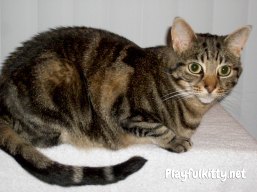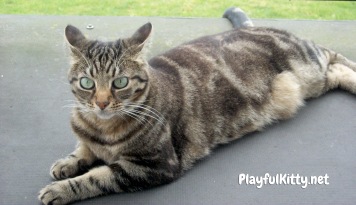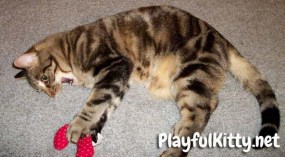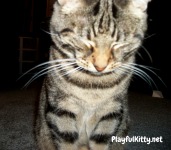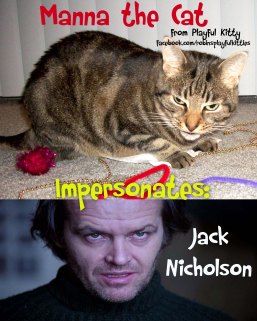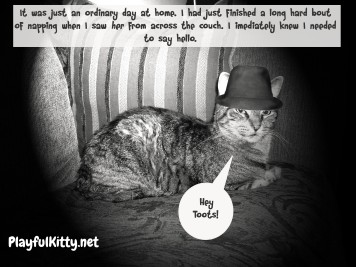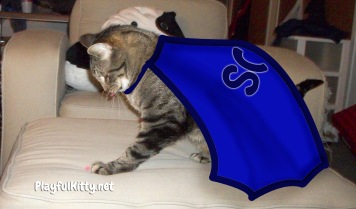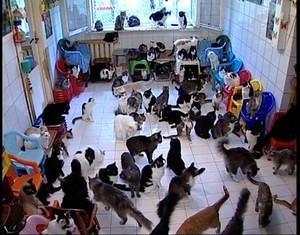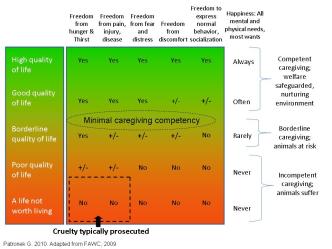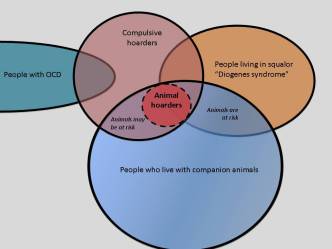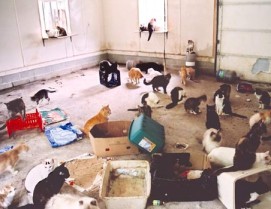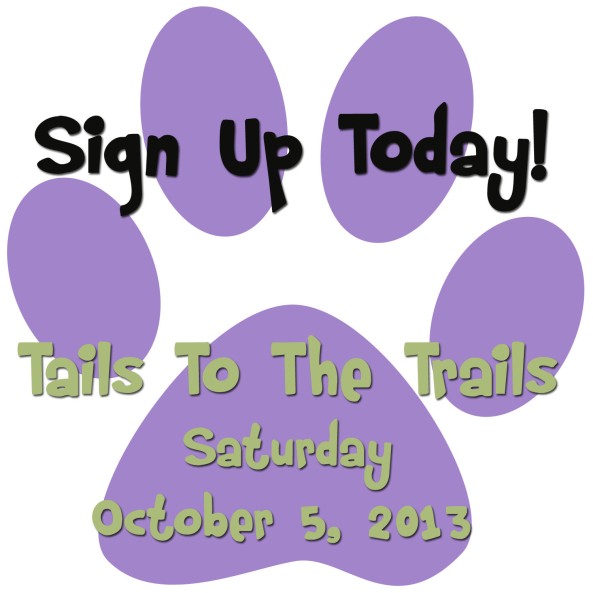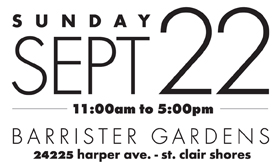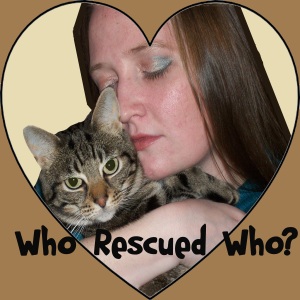Part of making a really cool cat blog is taking (and sharing) great pictures of cats. I am by no means a professional photographer; I have hand tremors and I use an out-of-date little point-and-shoot camera that is in desperate need of replacing. However, I have found some things that really work for me and some things that don’t. Perhaps some of the pawsome photographers out there can add to this conversation (by all means do), but here are some of my discoveries:
Lighting makes all the difference in the world.
I find that if I can take a photo of the cats with natural light, that photo will turn out better than one taken with the the lamps in my apartment doing the lighting. If natural light isn’t available, the lights have to be as bright as possible (without being blinding). Photo editing programs can help to brighten a photo, but there is definitely a difference between a well-lit photo and a photo brightened by editing. Good lighting also helps because then you don’t need to use the flash. Whenever I have to use the flash I spend tons of time editing “red eye” and/or sorting through photos to find one with the cats’ eyes open.
Try to see the cat’s point of view.
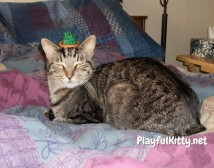
Cinco not realizing that I had placed a milk ring and a fuzzy ball on his head.
When I’m taking photos, I’m usually on my knees or crawling around on the ground to get as close to their eye-level as possible. Not too many interesting photos happen when I’m hovering over their heads. Photos that are taken straight on at the cats are a lot easier to use with an article if you ask me.
Get in the action.
Action shots are adorable! They make the cats look alive and playful – it gives them personality. Many times when I do a photo shoot with my cats, I am playing with them with one hand and taking photos with the other hand. Lucky for me, my little camera has a setting for taking action photos so they don’t look too blurry. I use this setting all the time because of my hand tremors (if I don’t it will look like a took my photos during an earthquake).
Take lots of photos.
It is rare that I get the photos I want in the first few shots. I just keep taking photos until either the cats have had enough or I’m just sick of taking photos. For my Wordless Wednesday shoots it is not unusual for me to take 100 photos. Then I just choose around 5 of them that turned out well to use. The more photos you take, the more likely you will get a few really good ones.
Add your own interpretation.
Cats don’t pose. No matter what great idea you have for your photo shoot, expect it to go awry. I just add a few elements to my “scene” and I see what the cats decide to do with them. I don’t force anything. The cats will do whatever the cats want to do. If some scene elements are not getting a good response, I replace them and try again. Adding catnip is helpful, but then they may just get busy licking the cat nip and refuse to look at the camera.
After the photo shoot, I add my own interpretation to the photos. This is a creative process. I look at what I’ve got and I say something like “hey, Cinco and Manna look like crime-fighting super heros” or ” This is like one of those slow, dark film noir scenes” or “hey! Manna looks just like Jack Nicholson in this photo.” Some interpretations are more creative and some are more reality based.

